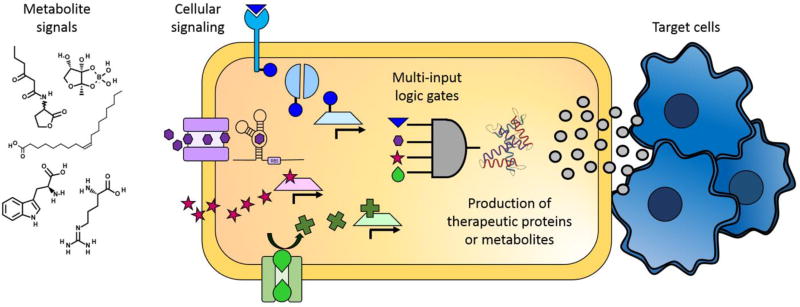Figure 1.
Overview of the ways that metabolite signals can be harnessed to create cellular therapeutics. Extracellular metabolites, including amino acids, fatty acids, and quorum sensing molecules, can trigger changes in cellular activity. Some metabolites enter the cytoplasm directly through the membrane or through specific transporters, and other metabolites bind to proteins either extracellularly or in the periplasm and trigger signaling cascades. Metabolites can effect changes in cells by changing the conformation of enzymes, mRNA, or transcription factors. Ultimately, to create effective cellular therapeutics, cells will have to sense and respond to multiple metabolite markers by enacting layered logic gates to tightly and specifically control the production of therapeutic proteins or metabolites. Finally, the therapeutic molecules must be released so that they can have the desired effect on the target cells.

